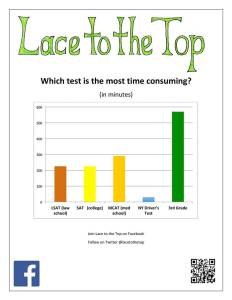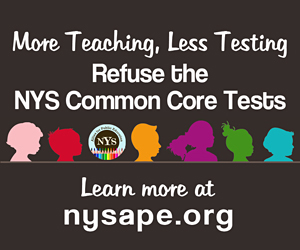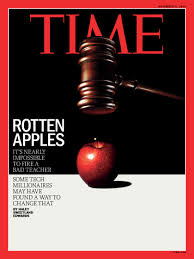Dear parents and educators of New York,
I teach elementary school in the East New York section of Brooklyn, New York. In 2013 and 2014, I administered Pearson’s New York State Common Core tests to English-language learners (ELLs). There is nothing meaningful about these assessments; no teacher I know supports them and I will not allow my child to take the tests when she enters third grade (even if the high-stakes are removed). Here are ten reasons why Pearson’s NYS Common Core tests should never see the light of day.
1.) They are too long, especially for students in grades 3-5. Over the course of six days, my 5th grade ELLs spent a total 13.5 hours sitting for the ELA (English-language arts) and math assessments. Here is what the 5th grade ELA assessment looked like last year (2014):
Day ONE: 27 pages long, 6 unrelated reading passages, 42 multiple choice questions
Day TWO: 3 unrelated reading passages, 7 multiple choice questions, 3 short response questions (written), 1 extended response question (written)
Day THREE: 3 reading passages, 5 short response questions (written), 1 extended response question (written)
Additionally, the below graph – created by Lace to the Top – shows that the third grade Common Core tests are twice as time-consuming as the SAT.
 2.) They are developmentally inappropriate. Lace to the Top recently analyzed third grade Common Core test samples and determined that Pearson’s NYS Common Core test questions are 2-3 grade levels above the grade being tested. The reading passage used for third grade was shown to have a readability average of 7.3 (7th grade)!
2.) They are developmentally inappropriate. Lace to the Top recently analyzed third grade Common Core test samples and determined that Pearson’s NYS Common Core test questions are 2-3 grade levels above the grade being tested. The reading passage used for third grade was shown to have a readability average of 7.3 (7th grade)!
3.) Pearson’s NYS Common Core standardized tests, which are costing the state $32 million, are not teacher-created, nor do they accurately reflect the contextualized skills and knowledge that students gain in the classroom. The tests are poorly constructed and uninspiring, and they contain ambiguous questions. 557 New York State principals signed this letter denouncing the tests.
4.) With Pearson’s Common Core state tests at the center of K-8 education in New York State, curriculum has narrowed, particularly in schools in low-income areas whose test scores tend to be low. Fearing increased scrutiny and potential closure, raising test scores has become the main focus in many schools. Some schools are little more than test prep factories with diminishing enrichment and project-based learning opportunities. Beginning in kindergarten, students are being taught test-taking strategies, most notably through the context-lacking close reading technique used in Common Core-aligned English-language arts. Pearson’s developmentally inappropriate and poorly constructed scripted reading program – ReadyGEN – is test prep for the NYS Common Core ELA test.
5.) The Common Core’s testing program encourages standardized testing in grades K-2. Title I schools in particular feel pressured to show – through periodic data collection – that students are learning the skills needed to perform well on the grades 3-8 Common Core state tests. This is what the standardized testing program looks like in my Title I first grade classroom this school year:
- Sept/Oct 2014 Common Core-aligned NYC Baseline Performance Tasks in ELA and Math (MOSLs used for teacher evaluation purposes only).
- Running Records administered one-on-one 4-5 times per year (they test reading levels).
- 12 Common Core-aligned end-of-unit GO Math! assessments (each comprised of 24 multiple choice questions and a multi-step extended response question).
- Monthly Common Core-aligned ReadyGEN writing assessments testing students’ understanding of narrative, persuasive and informative writing.
- Mid-year benchmark assessment in ELA – End of unit 2 ReadyGEN test comprised of 5 multiple choice comprehension questions, 5 multiple choice vocabulary questions and 1 written response.
- Mid-year benchmark assessment in Math – GO Math! test comprised on 40 multiple choice questions; 15 questions on skills not yet learned.
- May/June 2015 Common Core-aligned NYC Performance Tasks in ELA and Math (MOSLs used for teacher evaluation purposes only).
6.) The New York State Education Department (NYSED) lacks transparency and ethics. In upholding the corporate education reform agenda, which seeks to privatize public education, the NYSED’s intention is to perpetuate the false narrative that our schools are failing. Fred Smith, a NYS testing expert and statistician, and Lace to the Top have reported at length about Pearson’s poor quality tests and the NYSED’s unreliable test data, specifically its delayed release of technical reports, which evaluate the Common Core tests, missing test questions and predetermined test scores. The NYSED manipulates cut scores in order to legitimize its above-mentioned agenda; not only are cut scores constantly changing but the NYSED sets them AFTER the tests have been scored. Thus, the NYSED’s claim that 70% of our students are failing is invalid.
7.) An inordinate amount of planning and organizing time is devoted to preparing for the state tests. Giving the state tests is an administrative and logistical nightmare at the school level. Out-of-classroom teachers are pulled from their regular teaching program to administer and score the tests. Countless hours are spent bubbling testing grids and organizing them alphabetically by class. IEPs (individualized education program) are examined closely to ensure that students with special needs receive the correct testing accommodation(s). These include directions read and re-read, extended time, separate location, on-task focusing prompts, revised test directions, questions read and re-read. ELLs and some former ELLs are pulled from their regular classrooms for testing because they are entitled to extended time in a separate location. Also, there is professional development for teachers on testing policies and procedures including “reporting prohibited conduct by adults, student cheating, and other testing irregularities.”
8.) English-language learners (ELLs) must take Pearson’s NYS Common Core ELA test after just one year in the system. Students with IEPs are also required to take the tests unless they qualify for the New York State Alternate Assessment (NYSAA), which too is flawed. For a variety of reasons, it is misleading, insulting and grossly irresponsible of the NYSED to claim that 97% of ELLs and 95% of students with IEPs in grades 3-8 are “failures” in ELA. These figures completely disregard the growth students make in our classrooms.
9.) Our students are suffering. I’ve heard countless stories of kids who are sickened – both physically and emotionally – from New York State’s toxic Common Core testing program. I’ve personally witnessed students’ tears, anger and despair, and it’s heartbreaking. There is nothing humane, nothing redeeming about these tests. Morale is plummeting as teachers and administrators feel complicit in the state’s abuse of our children.
10.) Governor Andrew Cuomo has proposed basing 50% of a teacher’s evaluation on test scores from these highly flawed Common Core state assessments. Not only are these test scores unreliable but the American Statistical Association has warned against using the value-added model (VAM) to rate teachers and schools.
As you can see, the negative impact of NYSED’s punitive Common Core testing program is far-reaching. But we – as parents and educators working together – can take back power by refusing these tests. In order to save public education, a cornerstone of democracy in the United States, we must start thinking communally rather than individually.
Taking these tests is not “good practice” for our young learners; in fact, administering the tests is bad pedagogical practice. In addition, high test scores do not guarantee admission to selective NYC middle schools. Contrary to popular belief, opting-out does not hurt schools. With regards to opt-out’s impact on teachers, Change the Stakes, a NYC-based organization that opposes the NYSED’s testing program, writes,
It is not helpful to speculate about which students should or should not opt out in order to protect teachers’ evaluations. The bottom line is that the current teacher evaluation system is flawed. Opting out in large numbers is the most powerful way for parents to let policymakers know that we do not want our children, teachers and schools evaluated based on standardized test scores.
Our students and teachers are not failures; rather the NYSED has failed us.
– Katie
Here are some useful resources about the Common Core testing program:



 2.) They are developmentally inappropriate.
2.) They are developmentally inappropriate. 
